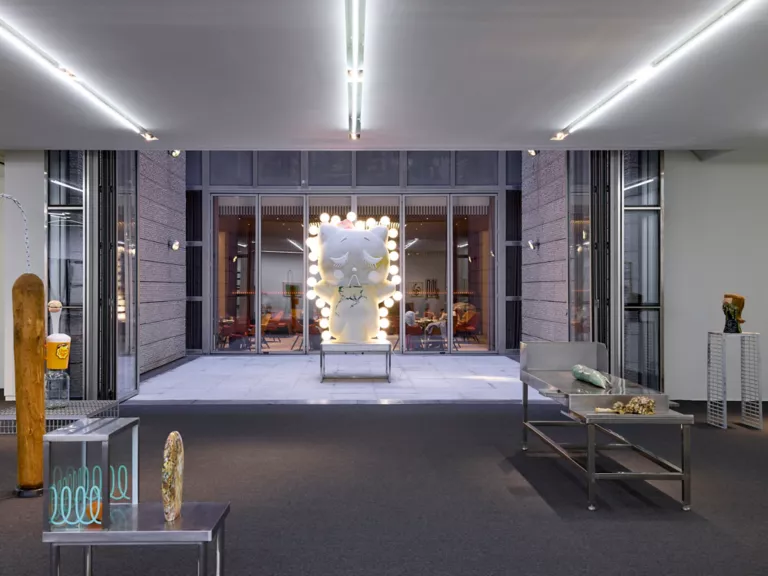
“Double:Binding:World:Tree” Poster Image ©Post Territory Ujeongguk
Post Territory Ujeongguk presents group exhibition “Double:Binding:World:Tree” through February 18. This exhibition connects the distant and close ties between Northern Europe and East Asia through the ubiquitous mythical tree metaphor of the ‘world-tree’, exploring geopolitical affinities and differences between the old and the new, human and non-human, plant and myth, growth and catastrophe.
In “Arts of Living on a Damaged Planet”, Norwegian biologist Andreas Hejnol writes about critically recognizing how outdated hierarchical and linear notions of metaphor are, and about writing different stories with different metaphors: In line with this call to write different metaphors, the artworks in the exhibition offer alternative narratives about ecology, gender, technology and the apparatus of the state, critically engage with gazes and ideas about the body, and attempt to reconsider the power and bias inherent in conventional institutions.
Luna Scales’s Eyelids jeopardizes the canon of familiarity and normality by replacing a classic image uncritically accepted in art history with another body illuminated by the camera’s eye. Ji Hye Yeom’s Black Sun X: Casper, Witch, and the Handstanderus suggests a reversed experience of perceiving the world by recounting the trajectories of three implicitly linked disasters. Mark Tholander’s We. They. There is a hybrid of the everyday and the surreal, narrative and character, animation and composition, with no prioritization or hierarchy, as the artist experiments with new narratives through choices he refuses to make. Maria Meinild’s NEW FEELING explores the workings of imagination and action, projection and emotion, as utilized in psychodrama, exploring both intimate relationships and large institutional structures. Tore Hallas’s You are closer to God when you do not indulge situates the complexity between blatant display and subtle discrimination between intimate relationships and public statements. Mooni Perry’s Research with Me, Missing: when my dog can’t even come back as a ghost questions the gendered associations of inhumanity found in East Asian fantasy and explores the boundaries and possibilities of a strangely expanding “I,” moving between the cloning industry and religious rebirth narratives that address the disappearance of existence.
Maximilian Schmoetzer’s Not Love Alone questions about emgering debates in restoration and reinvention using modern technology in the face of the political and ecological destruction of ancient artifacts and bird habitats. Minki Hong’s Paradise depicts the transformation of a marginalized area of social concern into a place of queering, rendering it as a “persona telling its own story,” and unveiling the story of a previously untold tale in a new way. Jisoo Chung’s Rosie, Eliza, Chloe, Ruby reveals the subtle areas of gendering through the gaze of objects that have been metastasized by human labor. Linda Lamignan’s A New Value System With Images and Symbols That Connect Us to Each Other and to The Planet proposes a physical activity that draws on the introspection of kung fu practice to connect humans and animals, and further appropriates it as a defense against an ideology embedded in violence. In Soufiane Adel’s The Light Falls, a father-son conversation set in the near future presents a non-linear flow of dialog within a linear video frame, and the questions posed by the two-dimensional projection of a three-dimensional object lead to philosophical reflection in an intuitive way.
The eleven artists in the exhibition intervene with metaphors and sensory impressions that are deeply rooted in their time and place. “Double:Binding:World:Tree” reveals, in their own way, the other worlds already inherent in the story.
















